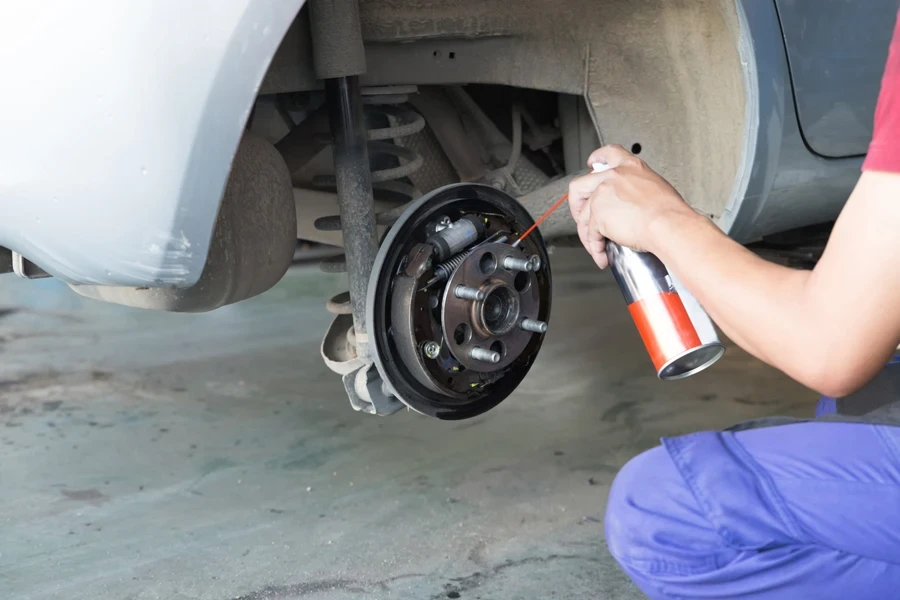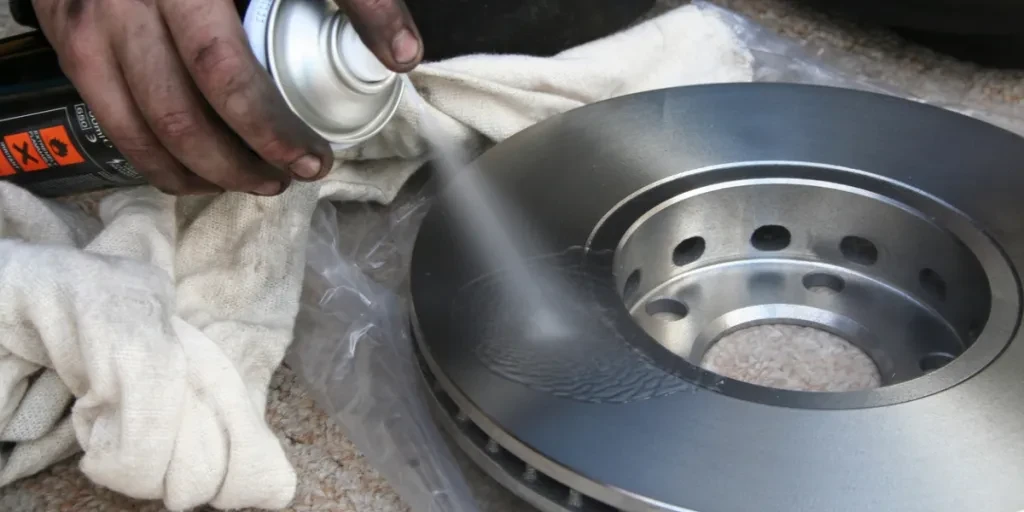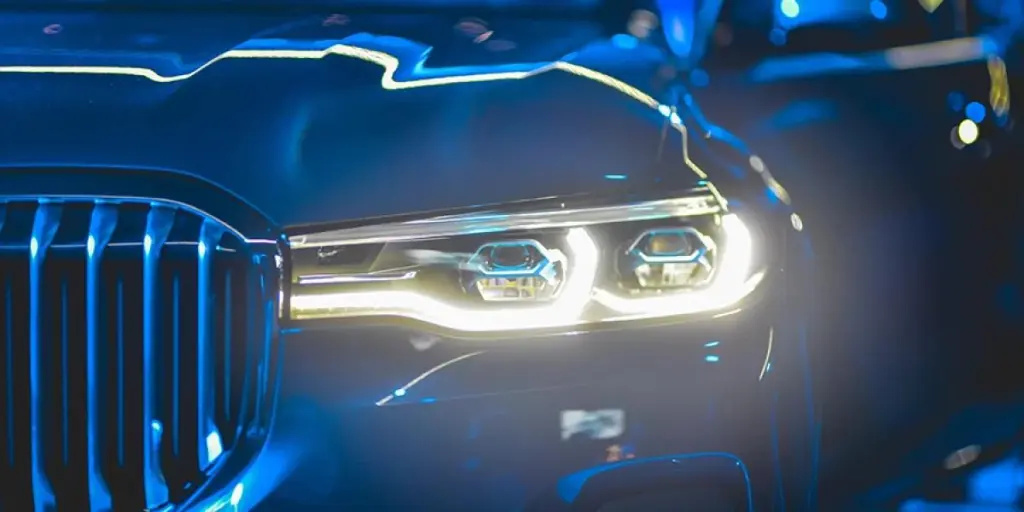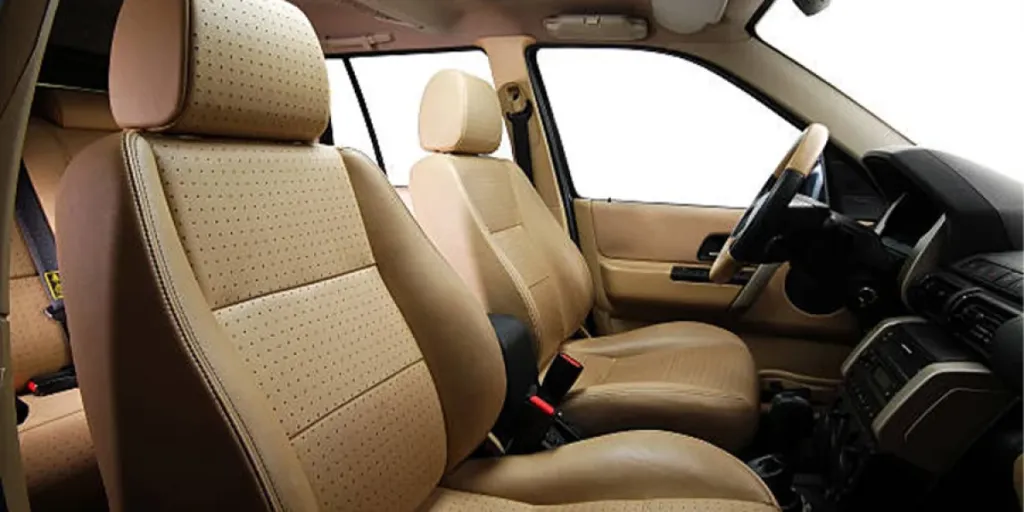The braking system is one of the most important systems in a vehicle. It can be the difference between safety and a disaster. A well-functioning braking system ensures control on the road.
However, over time, braking system components like brake pads and rotors accumulate dust, oils, and other impurities, compromising their performance. Brake cleaners remove dirt from the brakes to ensure optimal functionality.
As a small business and retailer, you should take advantage of the increased vehicle usage and stock brake cleaners. Brake cleaner sales will help you increase your market size and revenue.
In this article, we will examine brake cleaners, their uses, types, and safety tips when handling them. Read on to learn more about the benefits of brake cleaners to help your customers find the best options for their needs in 2025.
Table of Contents
Market overview
What is a brake cleaner?
Types of brake cleaners
Chlorinated brake cleaners
Non-chlorinated brake cleaners
Choosing the right brake cleaner
Safety and precautions when handling brake cleaners
Benefits of using brake cleaners
Final Thoughts
Market overview
According to Business Research Insights, the global vehicle brake cleaners market was valued at USD 2.51 billion in 2023 and is projected to grow to USD 4.44 billion by 2032 with a compound annual growth rate (CAGR) of 6.53% between 2023 and 2032.
The growing demand is fueled by the increasing number of people owning vehicles. As people’s incomes grow, they have more disposable income to buy vehicles. Moreover, more people are moving to urban areas and need to commute to work or school, necessitating them to buy vehicles, hence increasing the demand for brake cleaners.
There is a high demand for high-performance vehicles in the market, which require high-performing braking systems to give them the necessary stopping power. Technological advancements in the automotive industry have led to the development of enhanced braking systems, which in turn increase the demand for brake cleaners.
In addition, the growing awareness of road safety has led more people to choose high-performance braking systems that need brake cleaners for long life and optimal performance.
What is a brake cleaner?

Brake cleaner is a solvent-based cleaning agent specially made to remove grease, oil, brake dust, and other contaminants from the braking components. It is composed of powerful solvents like acetone, hexane, and heptane, which are highly effective at cleaning without leaving residue.
These solvents are non-corrosive and can remove dirt as it passes through the braking systems. They are fast-drying, and you don’t need to rub them in for them to work.
Types of brake cleaners

There are two types of brake cleaners that you should have in your inventory.
Chlorinated brake cleaners
Chlorinated brake cleaners have been around for a long time, even though their main ingredients have been banned in other applications. They have chlorine atoms in their molecular structure. Hence the term “Chlorinated.” These atoms power the chemical’s solvent properties.
Some of the ingredients in chlorinated brake cleaners include:
- Tetrachloroethylene: Also known as perchloroethylene (PERC), tetrachloroethylene is a non-flammable, fast-drying, high-performing solvent. It is also highly toxic and is a group 2A carcinogen. At high temperatures, it turns to phosgene gas.
- Methylene chloride: Also known as Dichloromethane, it is used alongside tetrachloroethylene in making chlorinated brake cleaners. Overexposure can lead to adverse health effects.
Non-chlorinated brake cleaners
Non-chlorinated brake cleaners do not have chlorine in their composition. Some of their ingredients include heptane and n-hexane.
- Heptane: It’s distilled from oil and highly flammable. It is toxic and can have long-lasting effects on aquatic life. It is safer than chlorinated solvents as it isn’t linked to cancer in humans or lab animals.
- N-Hexane: It is the most common ingredient in brake cleaner and is more flammable than heptane. It also lingers in the air in workspaces, making it prone to explosions. It is a neurotoxin, and prolonged exposure can cause reduced sensitivity, weakness, and numbness, among other symptoms.
While they have their negatives, non-chlorinated brake cleaners are safer and less environmentally harmful.
Choosing the right brake cleaner
With many brake cleaners on the market, it may be overwhelming for customers to choose the right one. Some factors to consider when choosing brake cleaners include effectiveness, safety, environmental impact, and brand.
Chlorinated brake cleaners are more effective but have a higher environmental impact. To reduce environmental pollution, users should look for low-VOC (volatile organic compound) options.
Users should also choose reputable brands like 3M, California Resources Corporation, PERMATEX, Gunk, Warren Distribution, Dr. Beasley’s, and Envirofluid.
Safety and precautions when handling brake cleaners

Brake cleaners are easy to use for DIY beginners and professionals. However, with their strong solvents, using them safely is essential to ensure the user’s safety. A few precautions to follow when using them include:
- Use in well-ventilated areas: Brake cleaners have toxic fumes when inhaled. One should work in open spaces or a garage with open doors with open airflow.
- Wear protective gear: Users should wear gloves to prevent skin irritation, safety goggles to protect their eyes from splashes, and masks if working in a poorly ventilated area to prevent inhalation.
- Keep away from flames: Non-chlorinated brake cleaners are highly flammable. Keep them away from open flames. Users should avoid sparks, smoking cigarettes, and other heat sources when using them.
- Proper disposal: Users should not pour brake cleaners down the drain as it is hazardous waste. They should dispose of it correctly according to their local environmental regulations.
Benefits of using brake cleaners
Brake cleaners have many advantages to the vehicle and the driver’s peace of mind. Some of its benefits include:
- Improved performance: Contaminants like grease and brake dust can reduce the friction between the braking components, making braking less effective. Brake cleaners help restore brake performance, ensuring safe driving.
- Extend parts’ lifespan: Regularly cleaning the brake prevents debris buildup, which causes premature wear and tear. This extends the brake’s lifespan, saving drivers money on replacements.
- Prevents squeaking and uneven wear: Dirty brakes can lead to funny noises like squawking when braking and uneven wear of the rotors and brake pads. Brake cleaners ensure the components are clean and functioning optimally.
- Residue-free and quick drying: Unlike other cleaning components like soap and water, brake cleaners leave no residues and dry fast. This ensures the brakes operate without interference from residue cleaning agents.
- Safer for users: Brake dust may contain harmful components like asbestos in older vehicles. Brake cleaners help remove brake dust without risking inhalation.
Final Thoughts
Brake cleaners are essential for both car mechanics and car owners. They help clean braking systems to keep them in optimal functioning condition.
As a small business and retailer specializing in automotive parts and accessories, brake cleaners are a must-have in your inventory. You should also have the correct information to educate your customers on their types, usage, and safety precautions when using them.




